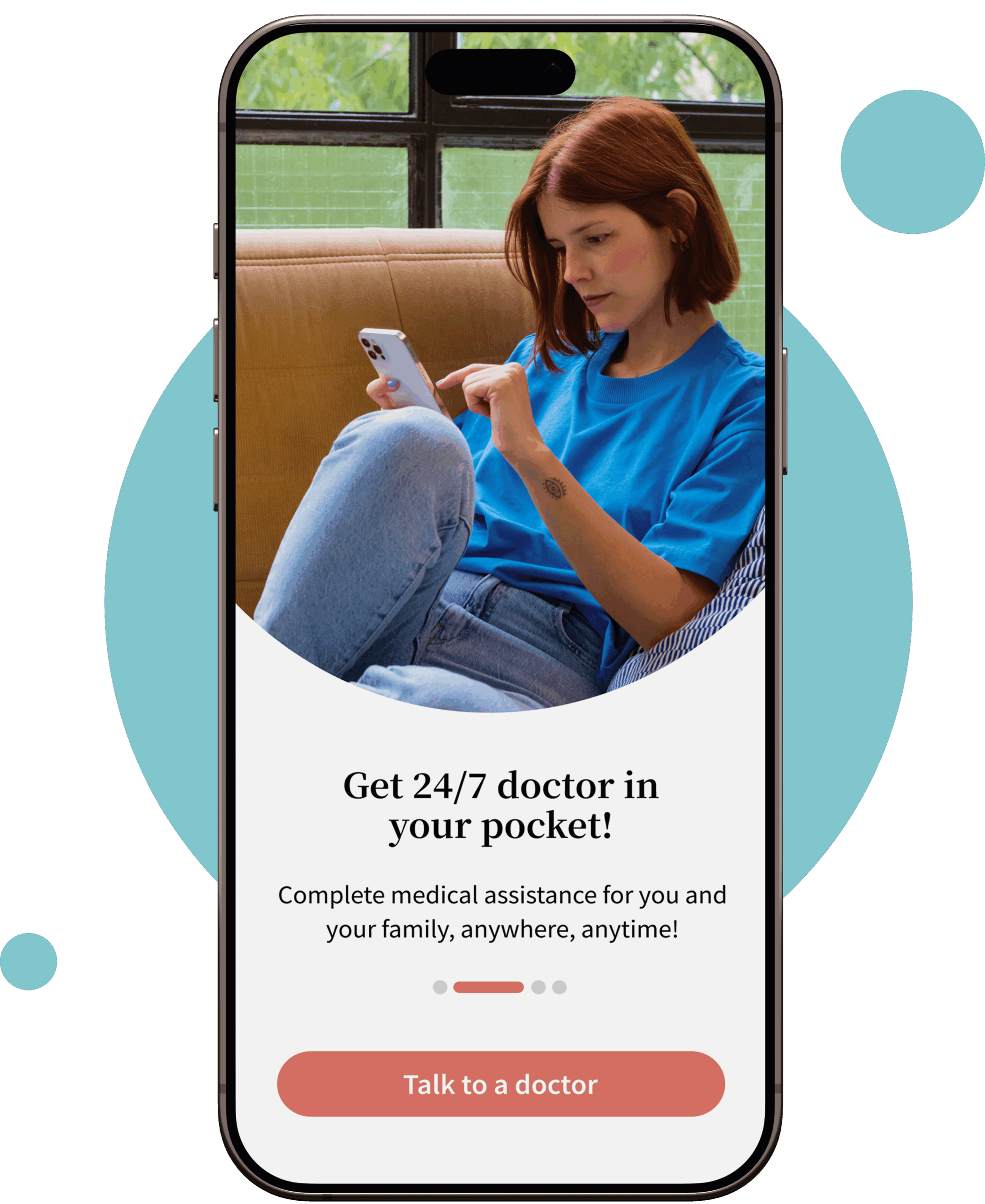
Get a prescription for Triamcinolone online
Triamcinolone is a medication used to treat various medical conditions (like Eczema, Asthma, Allergic reactions, etc.) characterized by inflammation and immune system responses. If you have these conditions, you can refill Triamcinolone.
Getting a Triamcinolone prescription from us is straightforward and effortless; you can connect with a qualified doctor anytime through “Your Doctors Online” to discuss your presenting symptoms. However, a Triamcinolone prescription will only be provided after consultation with our qualified doctor and if the treatment is entirely safe for your unique needs.
What is Triamcinolone?
Triamcinolone is a corticosteroid available under various brand names: Kenalog, Aristocort, and Nasacort. Triamcinolone has a diverse range of dosage forms, which enables healthcare professionals to customize treatment according to the individual requirements of patients. Various dosage forms encompass tablets, topical creams or ointments, injections, and nasal sprays.
Uses of Triamcinolone
Triamcinolone is recommended for atopic dermatitis, contact dermatitis, eczema, psoriasis, lichen planus, lupus erythematosus, dermatomyositis, and seasonal or allergic rhinitis. It’s one of the corticosteroids widely prescribed for managing several skin conditions.
How does it works?
Triamcinolone primarily targets the body’s inflammatory response and immune system by Inhibiting inflammation and immunosuppression. It suppresses the production of inflammatory substances, redness, and pain and reduces inflammation-associated swelling. Triamcinolone is efficacious in treating autoimmune diseases characterized by the immune system’s erroneous targeting of healthy tissues through its ability to modulate the immune response.
What are the different dosage forms and strengths of Triamcinolone?
Triamcinolone comes in different dosage forms, including cream/ointment (0.025%,0.1%,0.5%), lotion (0.025%,0.1%), Dental paste (0.1%), and aerosol solution. (0.0147%) , injections, and nasal sprays. This medication is not available in oral dosage forms like tablets and capsules.
How to take it?
When prescribed topically, this medication should be applied on the outer surface area of the skin where infection is present. The dental solution should be applied in the oral cavity per the instructions. Any healthcare professional will administer the Injection dosage form.
Side effects of Triamcinolone
Several common side effects include:
- Increased appetite
- Mood changes
- Irritability
- Anxiety
- Insomnia
- Heightened thirst
- Urination
- Fluid retention leading to swelling
- Weakened immune system.
Severe complications may arise with prolonged or high-dose use, including:
- Osteoporosis
- Glaucoma
- Adrenal suppression
- Elevated blood sugar levels
- Gastrointestinal issues
- Stomach irritation and ulcers
- Allergic reactions (though rare)
- Psychiatric effects like depression or psychosis in some individuals.
Request Triamcinolone prescription online
Get an online prescription for Triamcinolone in three easy steps.
1
Describe your issue
Download our app, register and tell us about your medical issue to get started.
- Anti-Inflammatory
- Anemia
- STD
- UTI
- Skin
- Covid
2
Chat with a doctor
Connect with a board-certified doctor. You can chat, send pictures and videos.
Dr. Nicole, I have contact dermatitis; I feel better after applying Triamcinolone. Can you give me a Triamcinolone prescription?
3
Get online prescription
Our online doctors can help you with your medical issues and give you prescriptions.
Prescription
Triamcinolone, Apply it two to four times a day.
Send Prescription
Precautions and contraindications
- Discuss your medication history with your healthcare providers to avoid any hypersensitive or allergic reactions.
- It’s unknown whether topical corticosteroids are transferred into milk or not. It’s good to use this medication after the consultation with your doctor to avoid harmful effects in an infant.
- This medication should not be used for the self-diagnosed fungal, bacterial, or viral infection that already exists. Consult your doctor or pharmacist for the correct and needed medical regimen.
FAQs about Triamcinolone prescription online
Is Triamcinolone over the counter?
Triamcinolone is unavailable over the counter, and a prescription must be obtained through a registered healthcare provider.
What are over-the-counter substitutes for Triamcinolone acetonide cream?
Non-prescription (over-the-counter or OTC) alternatives to Triamcinolone for managing certain skin conditions and allergies include topical creams, ointments, and oral medications. Hydrocortisone cream, Clotrimazole, and calamine lotion are considered non-prescription medications and alternatives to Triamcinolone.
How fast does Triamcinolone work?
The speed at which Triamcinolone (or any corticosteroid medication) works can vary depending on several factors, including the specific medical condition being treated, the form of Triamcinolone used (e.g., cream, injection, nasal spray, oral tablet), and individual response to the medication. In topical application, you notice improvement within a few days to a week. Nasal sprays may take a week or longer. In the case of oral, the onset of action is relatively rapid and may take a few days. And injections have a more immediate effect.
Is Triamcinolone a steroid?
Triamcinolone is classified as a corticosteroid, denoting its synthetic nature and capacity to emulate the physiological actions of endogenous corticosteroid hormones synthesized by the adrenal glands within the human organism. It is imperative to seek medical advice before initiating the usage of Triamcinolone.
How long does triamcinolone cream stay in your system?
The duration Triamcenolone remains in the body depends on factors such as dosage, frequency of administration, and individual metabolic processes. Generally, corticosteroids like Triamcinolone are eliminated from the body relatively quickly.
Who should not use Triamcinolone?
Individuals with certain infections, allergies to the drug, or systemic fungal infections should avoid its use. It’s essential to inform your healthcare provider of your medical history and any existing health conditions, as they will consider these factors when determining whether Triamcinolone suits you.
Is Triamcinolone an FDA-approved medication?
Yes. Triamcinolone is an FDA-approved medication for the treatment of several skin infections.
Which medication should be avoided with Triamcinolone?
These medications can interact with antifungals like Ketoconazole, Itraconazole, and certain antibiotics, including Clarithromycin and erythromycin. Do not take these medications when you are using Triamcinolone.
Your Doctors Online uses high-quality and trustworthy sources to ensure content accuracy and reliability. We rely on peer-reviewed studies, academic research institutions and medical associations to provide up-to-date and evidence-based information to the users.
Cleveland Clinic: Triamcinolone
WebMD: Triamcinolone dosage forms
-Phindile Mkhatshwa
-brooke snow
-Okiti Stephanie
-ASIF Khan
-Chelsey
-edith bien aime
-Lesego Thejane
-Stephanie Brown
-kulwinder gill
-Elijah Mark
Get started today
Talk to online doctors now and get medical advice, online prescriptions, and referrals within minutes. On-demand healthcare services at your fingertips.





